wikiHow is a “wiki,” similar to Wikipedia, which means that many of our articles are co-written by multiple authors. To create this article, 24 people, some anonymous, worked to edit and improve it over time.
wikiHow marks an article as reader-approved once it receives enough positive feedback. This article received 11 testimonials and 88% of readers who voted found it helpful, earning it our reader-approved status.
This article has been viewed 745,250 times.
Learn more...
Many fields require their own form of case study, but they are most widely used in academic and business contexts. An academic case study focuses on an individual or a small group, producing a detailed but non-generalized report based on months of research. In the business world, marketing case studies describe a success story presented to promote a company.
Steps
Planning an Academic Case Study
-
1Define the subject of study. A case study focuses on a single individual, a small group of people, or occasionally a single event. You'll be conducting qualitative research to find specific details and descriptions of how your subject is affected.
- For example, a medical case study might study how a single patient is affected by an injury. A psychology case study might study a small group of people in an experimental form of therapy.
- Case studies are not designed for large group studies or statistical analysis.
-
2Decide between prospective and retrospective research. Prospective case studies perform new studies of their own, involving individuals or small groups. Retrospective case studies examine a small number of past cases related to the subject of study, and do not require new involvement with the subject of these cases.
- A case study may or may not include both types of research.
Advertisement -
3Narrow down your research goal. This may be given to you in advance by a professor or employer, or you may develop it on your own. Here are the main types of case studies, organized by goal:
- Illustrative case studies describe an unfamiliar situation in order to help people understand it. For instance, a case study of a person with depression, designed to help communicate the subjective experience of depression to therapist trainees.
- Exploratory case studies are preliminary projects to help guide a future, larger-scale project. They aim to identify research questions and possible research approaches. For example, a case study of three school tutoring programs would describe the pros and cons of each approach, and give tentative recommendations on how a new tutoring program could be organized.
- Critical instance case studies focus on a unique cases, without a generalized purpose. Examples include a descriptive study of a patient with a rare condition, or a study of a specific case to determine whether a broadly applied "universal" theory is actually applicable or useful in all cases.
-
4Apply for ethical approval. Almost all case studies are required by law to obtain ethical approval before they can begin. Contact your institution or department and propose your case study to the people in charge of ethics oversight. You may be asked to prove that the case study does no harm to its participants.
- Follow this step even if you are conducting a retrospective case study. In some cases, publishing a new interpretation can cause harm to the participants in the original study.
-
5Plan for a long-term study. Most academic case studies last at least 3–6 months, and many of them continue for years. You may be limited by your research funding or the length of your degree program, but you should allow a few weeks to conduct the study at the very least.
-
6Design your research strategy in detail. Create an outline describing how you will gather data and answer your research questions. The exact approach is up to you, but these tips may help:
- Create four or five bullet points that you intend to answer, if possible, in the study. Consider perspectives on approaching the question and the related bullet points.
- Choose at least two, and preferably more, of these data sources: report collection, internet research, library research, interviewing research subjects, interviewing experts, other fieldwork, and mapping concepts or typologies.
- Design interview questions that will lead to in-depth answers and continued conversations related to your research goals.
-
7Recruit participants if necessary. You may have a specific individual in mind, or you may need to recruit people from a broader pool who satisfy your research criteria. Make your research methods and time frame extremely clear to the potential participants. Unclear communication could be a breach of ethics, or could cause a participant to walk out partway through the study, wasting a great deal of time.
- Since you aren't conducting a statistical analysis, you do not need to recruit a diverse cross-section of society. You should be aware of any biases in your small sample, and make them clear in your report, but they do not invalidate your research.
Conducting Academic Case Study Research
-
1Perform background research. If studying people, research information in their past that may be relevant, possibly including medical history, family history, or history of an organization. A good background knowledge of the research topic and similar case studies could help guide your own research as well, especially if you are writing a critical interest case study.
- Any case study, but especially case studies with a retrospective component, will benefit from basic academic research strategies.
-
2Learn how to conduct obtrusive observation. In a case study involving human participants, ethics guidelines do not typically allow you to "spy" on the participants. You must practice obtrusive observation, where the participants are aware of your presence. Unlike a quantitative study, you may talk with the participants, make them feel comfortable, and include yourself in activities. Some researchers do attempt to maintain a distance, but be aware that your presence will affect the behavior of the participants regardless of the relationship you form with them.
- Establishing trust with participants can result in less inhibited behavior. Observing people in their home, workplaces, or other "natural" environments may be more effective than bringing them to a laboratory or office.
- Having subjects fill out a questionnaire is a common example of obtrusive research. Subjects know they are being studied, so their behavior will change, but this is a quick and sometimes the only way to gain certain information.
-
3Take notes. Extensive notes during observation will be vital when you are compiling your final report. In some case studies, it may be appropriate to ask the participant to record experiences in a diary.
-
4Conduct interviews. Depending on the total length of your case study, you might hold an interview weekly, once every month or two, or just once or twice a year. Begin with the interview questions you prepared in the planning phase, then iterate to dig deeper into the topic:[1]
- Describe experience — ask the participant what it's like to go through the experience you're studying, or be a part of the system you're studying.
- Describe meaning — ask the participant what the experience means to them, or what "life lessons" they take from it. Ask what mental and emotional associations they have with the subject of your study, whether it's a medical condition, an event, or another topic.
- Focus – in later interviews, prepare questions that fill gaps in your knowledge, or that are particularly relevant to the development of your research questions and theories over the course of the study.
-
5Stay rigorous. A case study may feel less data-driven than a medical trial or a scientific experiment, but attention to rigor and valid methodology remains vital. If you find yourself drawn to studying a participant on one extreme end of the spectrum, set aside time to observe a more "typical" participant as well.[2] When reviewing your notes, question your chain of logic and discard possible conclusions that do not have detailed observation backing them up. Any sources you cite should be thoroughly checked for reliability.
-
6Collect all of your data and analyze it. After reading and referring back to your original bullet points, you may find that the data reacts in a surprising manner. You need to pull your information together and focus it before writing case studies, especially if your research was performed in intervals across months or years.
- If you are working with more than one person you will want to assign sections for completion together to make sure your case study will flow. For example, one person may be in charge of making charts of the data you gathered, while other people will each write an analysis of one of your bullet points you are trying to answer.
-
7Write your final case study report. Based on the research questions you designed and the type of case study you conducted, this may be a descriptive report, an analytic argument grounded in a specific case, or a suggested direction for further research or projects. Include your most relevant observations and interviews in the case study itself, and consider attaching additional data (such as full interviews) as an appendix for readers to refer to.
- If writing a case study for a non-academic audience, consider using a narrative form, describing the events that occurred during your case study in chronological order. Minimize your use of jargon.
Writing a Marketing Case Study
-
1Ask permission from a client. A marketing case study describes a "success story" between a business and a client. Ideally, the client has recently interacted with your business, and is enthusiastic about contributing a positive message. Choose a client close to your target audience, if possible.[3]
- Request high-level involvement from the client's side for best results.[4] Even if the client only wants to vet the materials you send them, make sure the person involved is high up in the organization, and knowledgeable about the company–client relationship.
-
2Outline the story. A typical marketing case study begins by describing the client's problems and background. It then rapidly moves on to describe how your company strategically approached these problems, and succeeded in fixing them to a high standard. Finish by describing how you can apply similar solutions across the industry. The entire case study should divide into about three to five sections.[5]
- Collaboration with the client is especially helpful here, so you make sure to include the points that left the most impact and biggest impression.
- If your target audience wouldn't immediately identify with your client's problem, start with a more general intro describing that type of problem in the industry.[6]
-
3Keep the study readable and powerful. Use bold text and headers to divide the case study into easy-to-read sections. Start each section with short, action sentences and strong verbs.[7]
-
4Include actual numbers. Use numeric examples that demonstrate how effective your solutions were. Make this as clear as possible, using actual numbers instead of (or in addition to) percentages. For example, an HR department could show impressive retention numbers following a process change, while a marketing team could demonstrate past sales boosts from its service.
- Charts and graphs can be great visual tools, but label these with large letters that make the positive meaning obvious to people who aren't used to reading raw data.[8]
-
5Solicit quotes or write them yourself. You'll definitely want to quote positive recommendations from your client. Often, however, the person writing these will not have a marketing background. Ask the client whether you can write the statements for them, although of course the client will sign off on these before publication.[9]
- These are typically brief quotes just one or two sentences long, describing your service in a positive light.
-
6Add images. Include photos and other images to make your case study more attractive. One tactic that can work well is to solicit photographs from the client. An amateur digital photograph of the smiling client team can add a genuine touch.[10]
-
7Spread the word. Make your marketing case study widely available. Try using Amazon Web Services, Microsoft's Business Hub, or Drupal.[11] Send copies of the study to the client you collaborated with as well, along with a certificate thanking them for their involvement.
Community Q&A
-
QuestionMy case study is on the impact of direct marketing and the profitability of Centenary Bank. How can I approach it?
 Community AnswerKnow what you want to find out, what you believe you will find, and what you believe you will not find. Try making an outline approach to writing your case study. There may be certain requirements you haven't included here.
Community AnswerKnow what you want to find out, what you believe you will find, and what you believe you will not find. Try making an outline approach to writing your case study. There may be certain requirements you haven't included here. -
QuestionWhy do we use case studies in academics?
 Community AnswerYou use them to back up information.
Community AnswerYou use them to back up information. -
QuestionWhen inserting an image into the case study, how do I label and present it?
 Community AnswerIt depends on the image and relevance. That is really a question to ask your professor or research partner as you might be bound by specific format requirements. Generally, you would add a label underneath the photo that identifies what it is, and a short blurb under that to explain its relevance to the study.
Community AnswerIt depends on the image and relevance. That is really a question to ask your professor or research partner as you might be bound by specific format requirements. Generally, you would add a label underneath the photo that identifies what it is, and a short blurb under that to explain its relevance to the study.
References
- ↑ http://scholarworks.umass.edu/cgi/viewcontent.cgi?article=1001&context=nursing_faculty_pubs
- ↑ http://scholarworks.umass.edu/cgi/viewcontent.cgi?article=1001&context=nursing_faculty_pubs
- ↑ https://blog.kissmetrics.com/creating-a-great-case-study/
- ↑ http://www.hoffmanmarcom.com/casestudy/howtowrite.php
- ↑ http://www.hoffmanmarcom.com/casestudy/howtowrite.php
- ↑ http://www.hoffmanmarcom.com/casestudy/howtowrite.php
- ↑ http://www.hoffmanmarcom.com/casestudy/howtowrite.php
- ↑ https://blog.kissmetrics.com/creating-a-great-case-study/
- ↑ http://www.hoffmanmarcom.com/casestudy/howtowrite.php
About This Article
To do a case study, start by defining the subject and goal of your study and then getting ethical approval from the institution or department you're working under. Once you've received approval, design your research strategy and recruit any participants you'll be using. Prepare to work on your case study for 3-6 months by scheduling routine interviews with participants and setting aside time each day to do research and take notes. When you're finished, compile all of your research and write your final case study report. To learn how to do a marketing case study, scroll down!
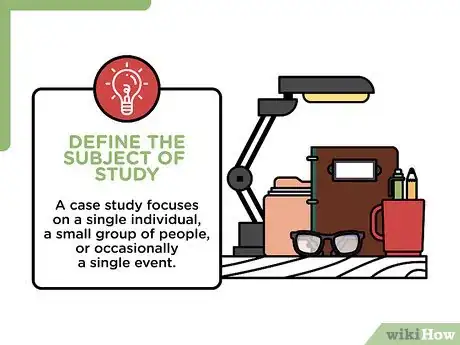
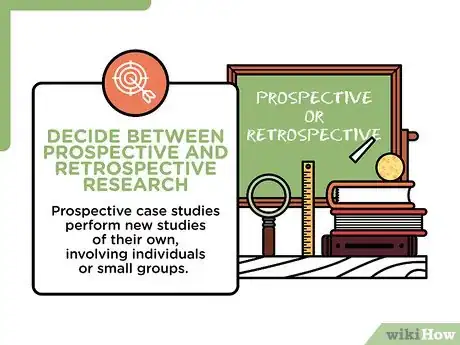
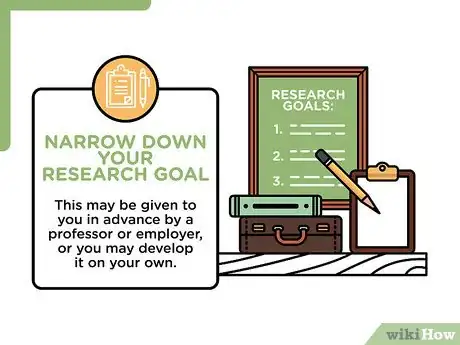
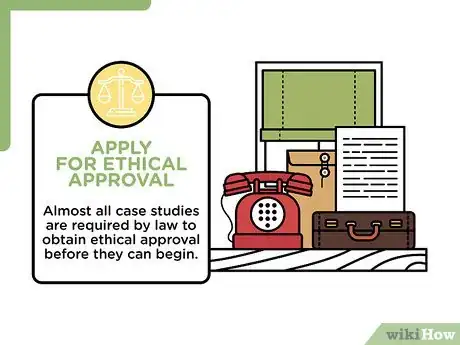
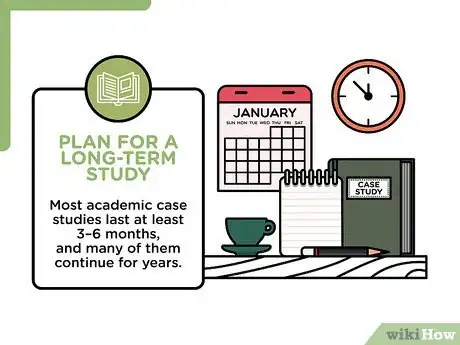
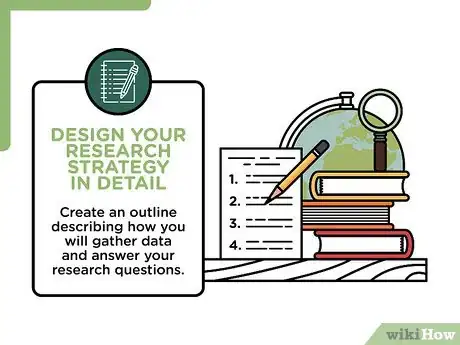

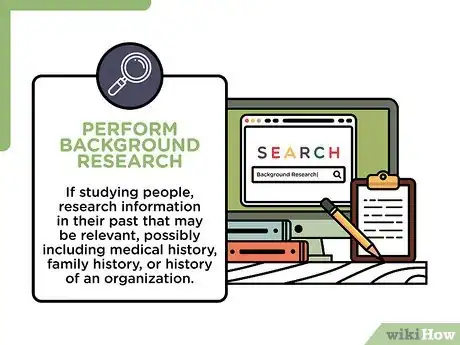
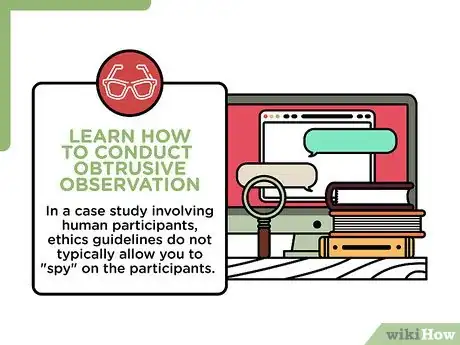


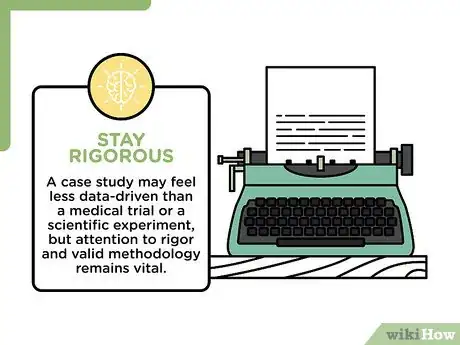

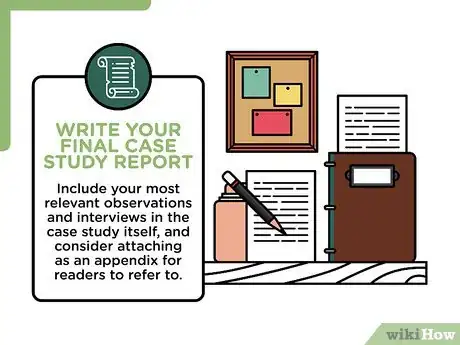
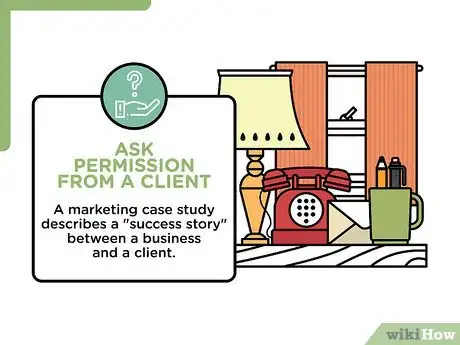
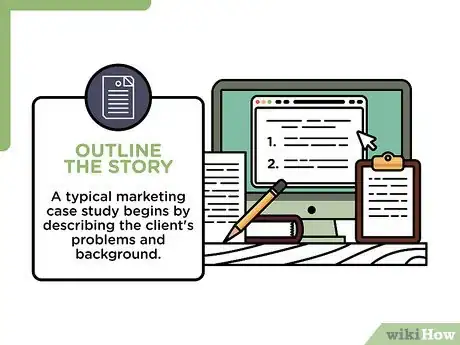



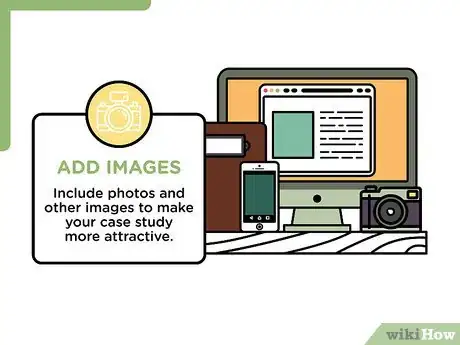








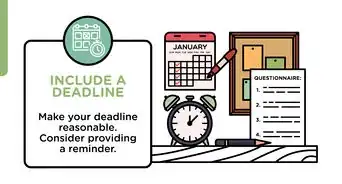



-Step-17.webp)


















































